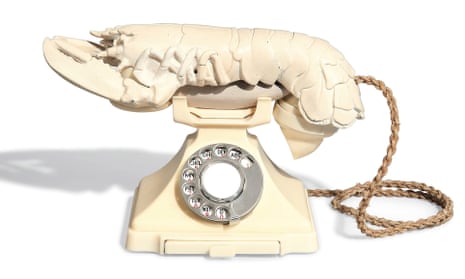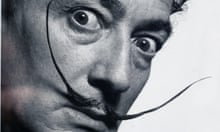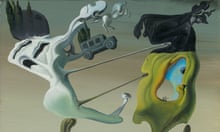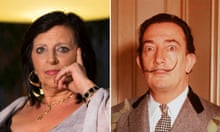A Salvador Dalí telephone regarded as one of the most recognisable of all surrealist artworks is to remain in the UK after it was acquired for £853,000 by the National Galleries of Scotland (NGS).
The lobster telephone had been sold at a Christie’s auction to a foreign buyer but was regarded as too important to be allowed to leave the country. Ministers placed an export bar on the item to allow a UK gallery time to raise the necessary funds.
It was announced on Monday that NGS had done just that and the phone will go on display this week at the Scottish National Gallery of Modern Art in Edinburgh.
Simon Groom, NSG’s director of modern and contemporary art, said the item filled an important gap. “This major acquisition cements our position as one of the world’s greatest collections of surrealist art … Before this acquisition we had nothing of this kind.”
The lobster phone was made in 1938, one of 11 commissioned by Edward James, the eccentric and wealthy patron of surrealist artists. The lobsters were made to fit bakelite telephones at his house in Wimpole Street, central London, and his country house Monkton in West Sussex. Four are red and the others white.
Almost all of them are in museum collections around the world, including a red one owned by Tate Modern and a white one in the collection of the Minneapolis Institute of Arts.
The phone was put up for sale by the Edward James Foundation, which had two. It had initially been expected to fetch between £150,000 and £250,000. The funds for the NGS acquisition came from the Art Fund, which provided £100,000, and the Henry and Sula Walton Fund, which gave £753,000.
Henry Walton was a professor of psychiatry at the University of Edinburgh and Sula Wolff was a renowned child psychiatrist. They left their collection to NGS and set up the fund to help the galleries acquire major works.
Groom said works such as the lobster telephone had a huge impact on artists such as Andy Warhol and Damien Hirst.
Stephen Deuchar, the director of the Art Fund, said it was proud to have helped to buy such an important work. “Dalí’s lobster telephone is amongst the most famous of all surrealist objects, typifying the spirit of the movement in its witty, subversive eccentricity.”







